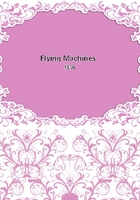
第52章
"We might compare the larger and smaller diameter portions of this form of screw propeller, to two power-driven vessels connected with a line, one capable of traveling 20 miles per hour, the other 10 miles per hour. It can be readily understood that the boat capable of traveling 10 miles per hour would have no useful effect to help the one traveling 20 miles per hour, as its action would be such as to impose a dead load upon the latter's progress."The term "slip," as applied to a screw propeller, is the distance between its calculated pitch speed and the actual distance it travels through under load, depending upon the efficiency and proportion of its blades and the amount of load it has to carry.
The action of a screw propeller while performing useful work might be compared to a nut traveling on a threaded bolt; little resistance is offered to its forward motion while it spins freely without load, but give it a load to carry; then it will take more power to keep up its speed; if too great a load is applied the thread will strip, and so it is with a screw propeller gliding spirally on the air. A propeller traveling without load on to new air might be compared to the nut traveling freely on the bolt.
It would consume but little power and it would travel at nearly its calculated pitch speed, but give it work to do and then it will take power to drive it.
There is a reaction caused from the propeller projecting air backward when it slips, which, together with the supporting effect of the blades, combine to produce useful work or pull on the object to be carried.
A screw propeller working under load approaches more closely to its maximum efficiency as it carries its load with a minimum amount of slip, or nearing its calculated pitch speed.
Why Blades Are Curved.
It has been pointed out by experiment that certain forms of curved surfaces as applied to aeroplanes will lift more per horse power, per unit of square foot, while on the other hand it has been shown that a flat surface will lift more per horse power, but requires more area of surface to do it.
As a true pitch screw propeller is virtually a rotating aeroplane, a curved surface may be advantageously employed when the limit of size prevents using large plane surfaces for the blades.
Care should be exercised in keeping the chord of any curve to be used for the blades at the proper pitch angle, and in all cases propeller blades should be made rigid so as to preserve the true angle and not be distorted by centrifugal force or from any other cause, as flexibility will seriously affect their pitch speed and otherwise affect their efficiency.
How to Determine Angle.
To find the angle for the proper pitch at any point in the diameter of a propeller, determine the circumference by multiplying the diameter by 3.1416, which represent by drawing a line to scale in feet. At the end of this line draw another line to represent the desired pitch in feet.
Then draw a line from the point representing the desired pitch in feet to the beginning of the circumference line.
For example:
If the propeller to be laid out is 7 feet in diameter, and is to have a 7-foot pitch, the circumference will be 21.99feet. Draw a diagram representing the circumference line and pitch in feet. If this diagram is wrapped around a cylinder the angle line will represent a true thread 7feet in diameter and 7 feet long, and the angle of the thread will be 17 3/4 degrees.
Relation of Diameter to Circumference.
Since the areas of circles decrease as the diameter lessens, it follows that if a propeller is to travel at a uniform pitch speed, the volume of its blade displacement should decrease as its diameter becomes less, so as to occupy a corresponding relation to the circumferences of larger diameters, and at the same time the projected area of the blade must be parallel along its full length and should represent a true sector of a circle.
Let us suppose a 7-foot circle to be divided into 20sectors, one of which represents a propeller blade. If the pitch is to be 7 feet, then the greatest depth of the angle would be 1/20 part of the pitch, or 4 2/10 inch. If the line representing the greatest depth of the angle is kept the same width as it approaches the hub, the pitch will be uniform. If the blade is set at an angle so its projected area is 1/20 part of the pitch, and if it is moved through 20 divisions for one revolution, it would have a travel of 7 feet.